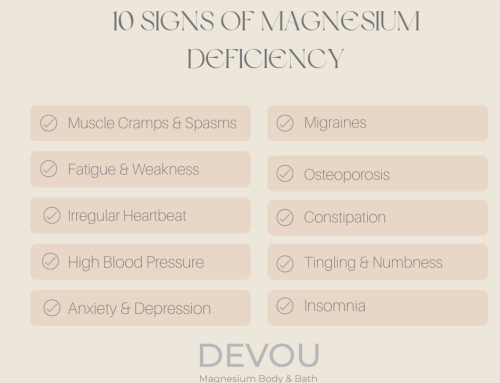Magnesium is a vital mineral responsible for over 300 enzymatic processes in our body, it is critical for health and vitality. Most people know that magnesium is a strong muscle relaxant which will also assist you to sleep well however it is also critical to help speed recovery whether it’s exercise related pain and muscle soreness or related to other nerve and pain conditions.
During a times of exercise or labour intensive work our bodies require a far greater amount of magnesium due to its loss through increased perspiration and urinary output as well as the additional requirement our bodies need to produce energy and for muscle function. Alone magnesium will improve muscle function by feeding our muscles, reduce fatigue by increasing ATP (energy) production and balancing our electrolytes. Magnesium will also assist to kick out lactic acid from our cells to reduce delayed onset muscles soreness post workout. Applying Magnesium direct to the worked muscles is a great way to recover faster from exercise.

But what about nerve pain? Whilst Magnesium is a known muscle relaxant and known to reduce muscle pain, it is not readily known for its role it plays in promoting healthy nerve function. Many people have used topical Magnesium for pain relief of nerve related conditions without really understanding why it works. A recent study has shown just how magnesium works for nerve pain, it shows that magnesium settles down the brain chemical known as NMDA otherwise known as the pain carrying neurotransmitter. In other words it effectively turns off the pain receptor produced by our brain and fed through our body by the nervous system. Essentially this is why magnesium has been an effective pain reliever for many nerve related conditions such as sciatica, neuropathic pain and fibromyalgia.
“What is essential to remember about treating pain with magnesium is that it treats both the symptoms and the cause of pain, meaning that the cause of pain can often be traced back to a Magnesium deficiency.” Dr Sircus
Many studies have shown that Magnesium deficiency can be a major amplifier of pain. Due to our limited dietary intake and food processing it is estimated that 80% of the population require additional Magnesium for health. Applying topical Magnesium to the area will help you recover Faster and will help to boost your body’s Magnesium levels as well as reducing pain while also leaving you feeling more energetic, helping you stay active!
Reference
“Mg attenuates chronic hypersensitivity and spinal cord NMDA receptor phosphorylation in a rat model of diabetic neuropathic pain,” The Journal of Physiology. Published online before print September 13, 2010, doi: 10.1113/jphysiol.2010.197004.a


